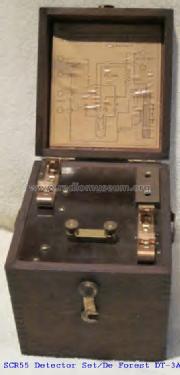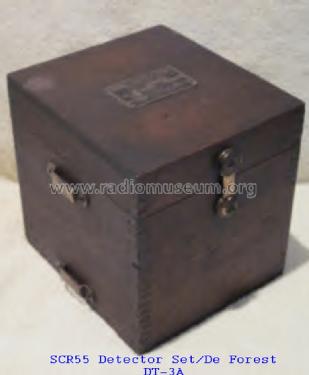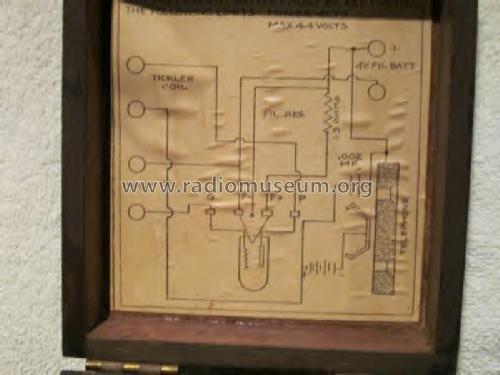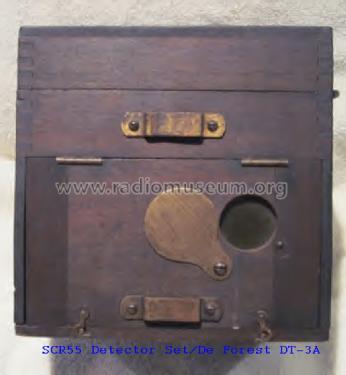SCR-55 Vacuum Tube Detector DT-3A
DeForest Radio Telephone & Telegraph Co. (De Forest); New York
- Country
- United States of America (USA)
- Manufacturer / Brand
- DeForest Radio Telephone & Telegraph Co. (De Forest); New York
- Year
- 1918
- Category
- Military Equipment (not Re, Tr or RXT)
- Radiomuseum.org ID
- 193775
-
- alternative name: Lee De Forest Mfg.
- Number of Tubes
- 1
- Valves / Tubes
- VT-1
- Main principle
- Detector with Vacuum Tube (Valve), no tuner
- Wave bands
- - without
- Power type and voltage
- Storage and/or dry batteries
- Loudspeaker
- - For headphones or amp.
- Material
- Wooden case
- from Radiomuseum.org
- Model: SCR-55 Vacuum Tube Detector DT-3A - DeForest Radio Telephone &
- Shape
- Tablemodel, Box - most often with Lid (NOT slant panel).
- Notes
- From the 1918/1919 Annual Report of the Chief Signal Officer to the Secretary of War: SCR-55: This type number was formerly assigned to a vacuum tube detector used with the SCR-54 receiving set. Later the type number for this detector was changed to DT-3 and later to DT-3A. It was thought that a vacuum tube detector would eliminate some of the difficulties of the SCR-54 set and give increased sensitivity and when used in combination with a two-stage amplifier would perform all of the functions of the French 3-ter amplifier. The set was first designed in the summer of 1917, being then designated as the AR-5. Samples were taken to the American Expeditionary Forces in the fall of 1917 by Co. Culver. Favorable reports were received from American Expeditionary Forces in January 1918 but it was concluded that the crystal detector was sufficiently sensitive. The set was later modified by Western Electric Co. and complete Signal Corps drawings were made by the radio laboratories.
- Literature/Schematics (1)
- Annual Report of the Chief Signal Officer for the Signal Corps.
- Author
- Model page created by Alan Larsen. See "Data change" for further contributors.
- Other Models
-
Here you find 159 models, 133 with images and 16 with schematics for wireless sets etc. In French: TSF for Télégraphie sans fil.
All listed radios etc. from DeForest Radio Telephone & Telegraph Co. (De Forest); New York




